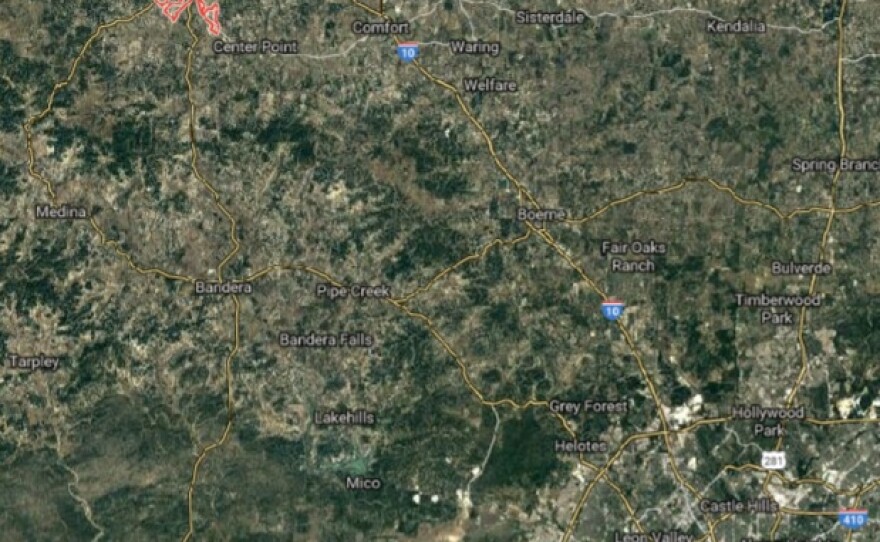The National Transportation Safety Board reported on Tuesday that a twin-engine plane that crashed near Kerrville Municipal Airport, killing six people, was flying lower and slower than it should have been on its final approach.
NTSB spokesman Mike Folkerts held a news conference near Monday's crash site, six miles northwest of the airport, where he described the Beechcraft BE58's final moments.
“While on final and below cloud layer, the aircraft began to slow and also descend to a low altitude," he said. "The last air traffic control data was captured at 8:50 a.m. Central Time -- the aircraft was at 2,000 feet above sea level, which is about 200 feet above the ground level.”
Folkerts said the investigation's first phase will focus on mechanics.
“Today and in the weeks ahead, we’re examining aircraft systems to include the fuel systems, both engines, both propellers. We do have engine data that we’re going to be able to download that should give us some insights as to what may have been going on with the engines.”
Folkerts said investigators will also review the health of the pilot, 65-year-old Jeffrey Carl Weiss of Houston. The five other victims were also from Houston. Folkerts said they were flying into Kerrville on a business matter.
The Texas Department of Public identified the six victims as Weiss; Stuart Roben Kensinger, 55; Angela Webb Kensinger, 54; Mark Damien Scioneaux, 58; Scott Reagan Miller, 55; and Marc Tellepsen, 45. All were Houston residents.
Folkerts described Weiss as an experienced pilot with more than 5,000 flight hours. He said the pilot purchased the 1999 twin-engine plane in 2002.
He said witnesses reported seeing the aircraft spiral out of control but no one saw the plane actually hit the ground.
More preliminary information is expected to be released next week, and the formal investigation results will not be released for another year.
On Monday, construction worker Richard Hall said he was on a Bobcat vehicle when he saw the plane fly about 300 or 400 feet over his worksite. He said electricians working with him said they heard the engine cut out.
“I couldn’t hear," he said. "I was on a loud machine, but the electricians said they heard it cutting out, and then the electricians said they saw it bank left real hard, which is when it hit this ravine. ..."
Hall said he rushed to the crash site. He said the plane appeared flattened out.
Local resident and former pilot Robert Hurt said he was puzzled why the plane was so far out on its final approach to the airport. He said weather conditions were good.
"No need for instruments, that I could tell," he said. "I am puzzled why they were this far out. You would not need to come this far out," referring to the final approach.
Brian Kirkpatrick can be reached at Brian@TPR.org and on Twitter at @TPRBrian.




